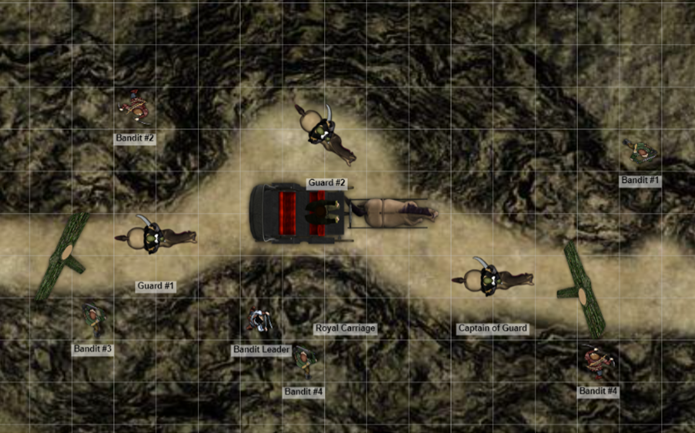Your hero has done it, they’ve solved problems, recovered from setbacks, and now have come face to face with their adversary. Whether you write romance, fantasy, sci-fi or any other genre, you can incorporate a physical combat scene of some kind into your story, if you wish to. This can be a climatic moment, full of adrenaline and nail-biting suspense that leaves your readers frantically turning the page. Yet, it can be one of the trickier scenes to write, with the rapid action and the difficulty this causes with expressing them in a way that is engaging. It can be especially hard for someone who has never been in an actual fight (like myself). So what are some ways to counter the main problems that crop up when writing fight scenes?
Specifically this post is going to look at physical combat in a way that can be applied to various genres and forms (for example, a fist fight, sword fight, or the use of modern weaponry). It won’t be discussing the scientific and realistic points of combat for this reason, there would be far too much to cover. Instead, these are generic tips intended to aid in the writing process.
Problem 1- Visualising the Scene
One of the main issues that I have is visualising what each character is doing within the scene, especially with larger fights with multiple characters or entire armies. The more pieces to keep track of, the easier it is to become confused about the rapid shifts in position, status of the characters, and even who is winning. This can translate into your writing, leaving the readers unsure of what is happening. Your fight scene could be an epic emotional point in the novel, but if the reader is confused about what is happening, then it will reduce the scenes impact.
A great way to combat this is to transform the written words into a visual diagram. This can work whether you like to plan out every detail in advance (you can draw the battle diagram beforehand) or seeing where the story takes you (in which case you can add to the diagram as you go, so you don’t need to keep reading over your work). Using different colours for different characters or important items will help you quickly notice where things are as the scene progresses. Depending on the length of the scene, or the number of combatants, this can become messy so you may need to do multiple diagrams to help ensure clarity.
I would also recommend using websites like Roll20 (https://roll20.net). Designed for playing table-top roleplaying games like Dungeons & Dragons online with friends, such sites often have a map feature where you can design your own fight scene. Importantly these include movable tokens that can help represent different characters. As such, it is a brilliant tool that can help writers to visualise a combat scene… or any scene really! Oh, and I should say it is free! There are additional features you can buy for a price, however, the free version is perfectly sufficient.

Problem 2- Knowing Limitations
The limitations of the human body, the weapons/armour/tools the characters are using, as well as the environment are vital in producing believable fight scenes. There is nothing more immersion breaking than having a character being seriously injured only to act like it was nothing! It is therefore incredibly important that you do the relevant research to help you ground your combat. You don’t need to be an expert, and do not explain the intricacies in your writing, this will annoy the reader and disrupt the combat.
What these limitations are depends heavily not only on the individual characters but the genre or medium you are creating. Anime and manga routinely involve punching characters through walls or into the ground and having them walk away bruised but alive (whilst in reality, you’d at least be severely injured). This is acceptable within that medium, if it was a realistic drama novel you were writing, this would completely break the genre conventions in a negative way. The specific circumstances of your story will play a huge role in what these limitations are. Yet it is still vital to have them, so you can maintain the believability of the story but also increase the stakes of the scene in a way that does not undermine your worldbuilding and the reader’s immersion.
Problem 3- Perspectives
One thing to keep in consideration when writing a combat scene is the perspective. A 3rd person perspective will allow you to have a wider view of the battlefield, especially if this is an omnipotent perspective you can then give the reader information that the main character does not, upping the tension. However, it is important that you do this sparingly, as with the visualisation problem mentioned earlier, it can be confusing if the narrator keeps jumping across a large combat. It could also reduce the potential impact. One negative is that this perspective can distance the reader from the intensity of the action.
1st person combat has the opposite effects. It is not possible to give the reader additional unknown information, since the story is framed by a character, however they can be situated directly within the fight.
A problem with both perspectives is how the fighting is written. Too often a writer will focus on the short, direct statements of action which catches the intensity and speed of the combat but misses out on the emotional state of the character and the physical environment around them. Although the idea that you are unable to fully perceive what is going on in the moment during combat, the fog of war, is true and can produce some fantastic drama and suspense, do not prioritise it at the detriment of clarity. Include references to positioning, moments of thoughts and feelings, sensory descriptions, to break the monotony of action. To demonstrate this, I have created two short paragraphs that retell the exact same moments of a scene where the hero is finally engaging the evil Dread King in the large final battle. Around them two armies are fighting a brutal and bloody battle.
“I swung my blade. The Dread King’s sword caught it. Hilts interlocked, I could only stare into the void of his eyes.” This doesn’t seem so bad yet an entire chapter of this would quickly become boring. Let’s try adding some additional information.
“Leaping over the broken barricade, I swung my blade down. The Dread King raised his own. Intercepted mine. Caught it. Both weapons screeching like the surrounding dying till the hilts interlocked. I could now only stare into the void of his eyes, finally realising where his title came from.” Personally I prefer this one, I get a better sense of the character’s movement, as well as some sensory information and their emotional state at the end.
It is important to include enough additional information but not oversaturate the text as this will lose the sharpness of the action with the shorter sentences. Your character won’t be describing the entire scene in minute detail, or pausing for long durations, only include brief descriptions to avoid losing the fast pace. As with anything in writing, this will come with practice and experimentation as well as your own personal preference.
These are just a few of the general tips that I have picked up over the years and I do hope that you find them useful in writing combat scenes! In the future, I hope to go into more detail with specific scenarios and aspects of fight scenes for a more nuanced focus. Let me know if this is something that you’d be interested in!
What are your tips for writing combat scenes? Feel free to share them below!
Hint of the Week:
Unravelling the layers brings questions and answers

